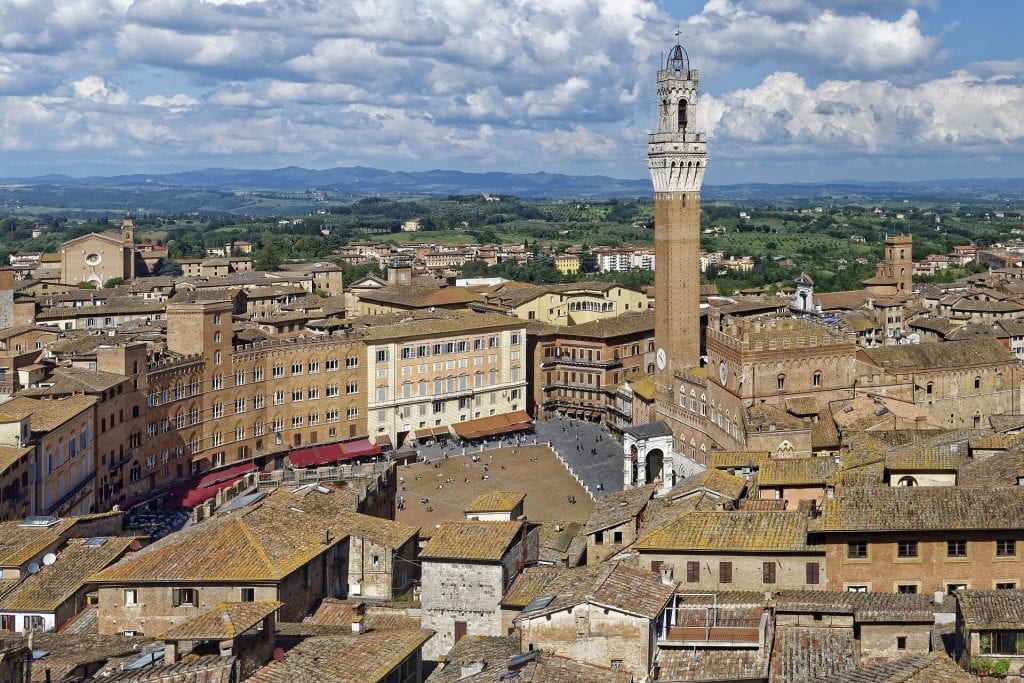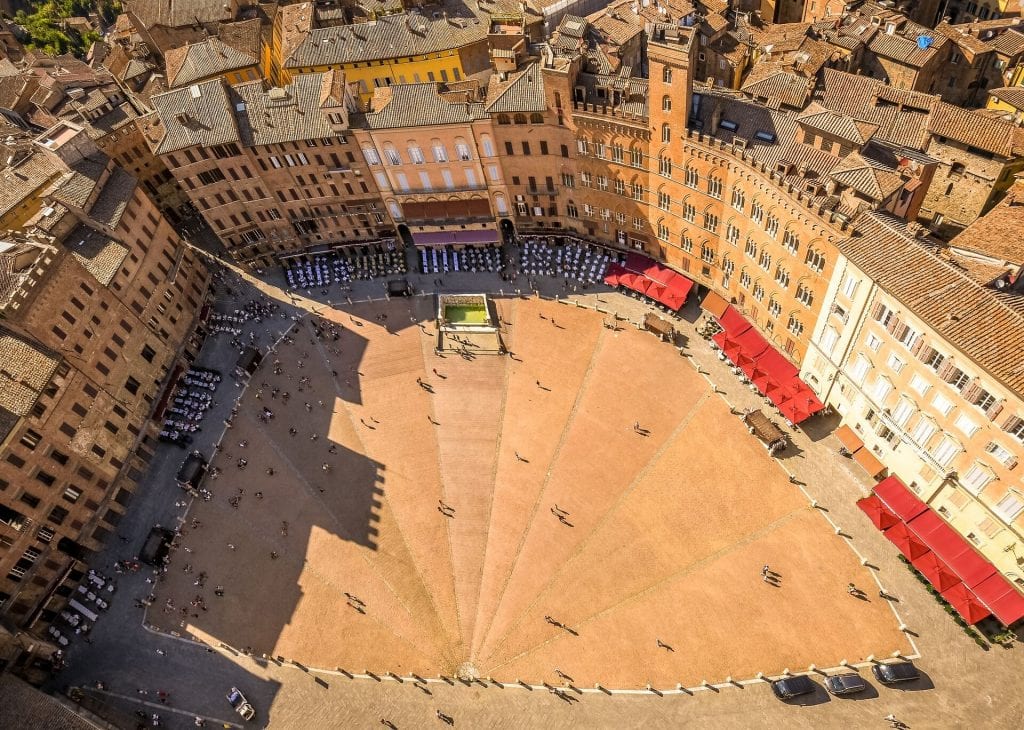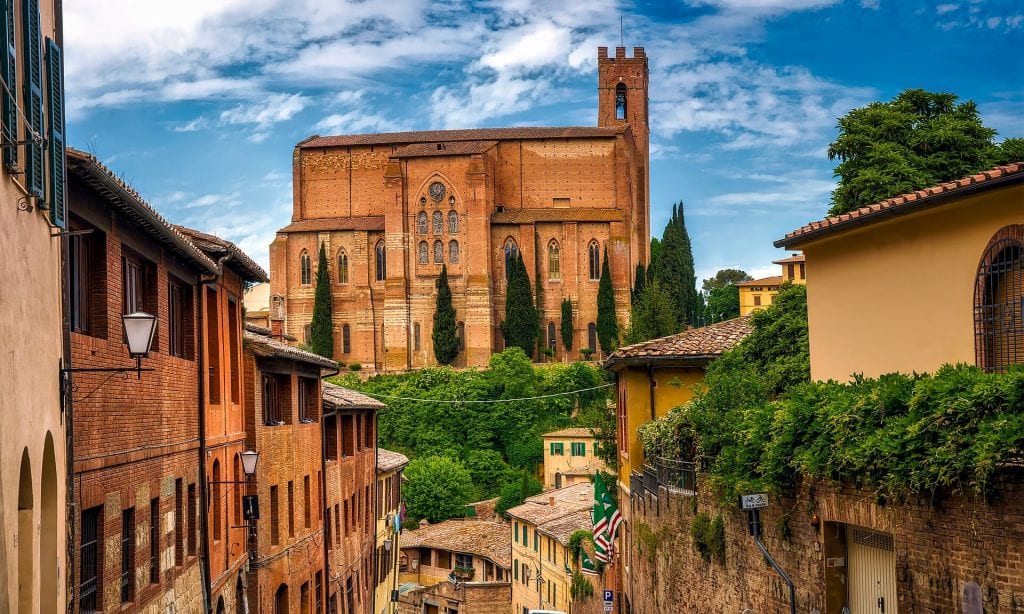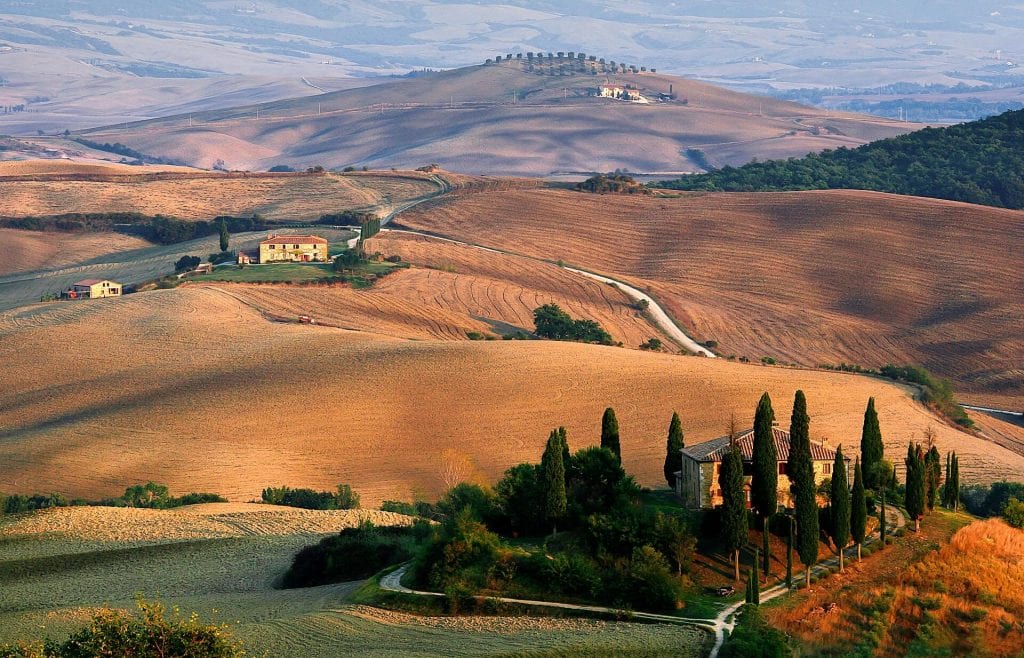The historic centre of Siena has been declared by UNESCO a World Heritage Site.
Siena is one of the nation’s most visited tourist attractions, with over 163,000 international arrivals in 2008.
Siena is famous for its cuisine, art, museums, medieval cityscape and the Palio, a horse race held twice a year.
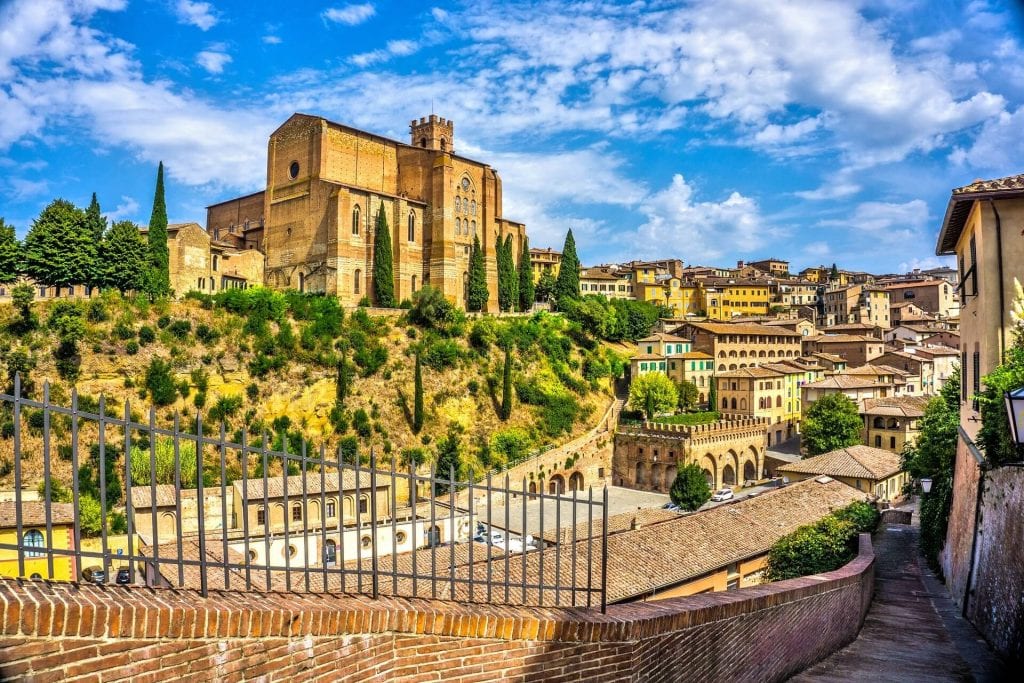
The Siena Cathedral (Duomo), begun in the 12th century, is a masterpiece of Italian Romanesque–Gothic architecture.
Its main façade was completed in 1380 with a nave oriented northeast-southwest. A proposed expansion of the eastern transept would have transformed the church into an ambitiously massive basilica, the largest then in the world, with an east-west nave. However, the scarcity of funds, in part due to war and the Black Death, truncated the project.
Two walls of this expanded eastern transept remain; through an internal staircase, visitors can climb for a grand view of the city.
The Siena Cathedral Pulpit is an octagonal 13th-century masterpiece sculpted by Nicola Pisano with lion pedestals and biblical bas-relief panels. The inlaid marble mosaic floor of the cathedral, designed and labored on by many artists, is among the most elaborate in Italy. The Sacristy and Piccolomini library have well preserved Renaissance frescos by Ghirlandaio and Pinturicchio respectively. Other sculptors active in the church and in the subterranean baptistry are Donatello, Lorenzo Ghiberti, Jacopo della Quercia and others. The Museo dell’Opera del Duomo contains Duccio’s famous Maestà (1308–11) and various other works by Sienese masters.
The Piazza del Campo, the shell-shaped town square, unfurls before the Palazzo Pubblico with its tall Torre del Mangia. This is part of the site for the Palio horse race. The Palazzo Pubblico, itself a great work of architecture, houses yet another important art museum.
The Palazzo Salimbeni, located in a piazza of the same name, was the original headquarters and remains in possession of the Monte dei Paschi di Siena, one of the oldest banks in continuous existence in Europe.
As a walled hill city, Siena’s centro storico is extremely picturesque, and from high towers, you can see the beautiful countryside that still largely surrounds the city. With a few notable exceptions (including the pretty yellow color of the sunflowers that are cultivated for oil for export), the Sienese countryside looks almost the same as it did in Medieval paintings. The Sienese countryside is part of the Chianti region, and therefore, it is easy to find good local wines in Sienese shops and to accompany your meals in ristoranti and trattorie.
Sienese cuisine is delicious, and though some eateries are definitely better than others, it is difficult to find truly bad food in this city. In addition to being known internationally as a Medieval city that’s a great draw for tourists, Siena is known nationally as a university town, and there are also places for foreign visitors to stay for a few weeks and study Italian or other subjects.
To reach Siena from Rome it takes around 2,5 hours

